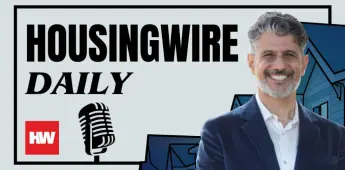Fannie Mae
The Federal National Mortgage Association, or as it’s more commonly known as, Fannie Mae, has a history that dates back to the Great Depression in the 1930s. Established by the U.S. Congress in 1938, the enterprise was born out of a need for more financial security in the housing market after the Great Depression resulted in a surge of foreclosures. The National Housing Act of 1934, which established the Federal Housing Administration (“FHA”) and the Federal Savings and Loan Insurance Corporation, was amended in 1938 to not only create Fannie Mae but also Fannie’s counterpart, the Federal Home Loan Mortgage Corporation, better known as Freddie Mac.
Fast forward to 2008 and the two enterprises were forced into the spotlight again during the Great Recession. Between an increasing number of people getting mortgages with little to no credit, a fast-growing supply of vacant homes on the market from borrowers going into default and many other factors that collided together, America’s economy was in trouble and Fannie Mae and Freddie Mac were at the center of it. In the aftermath of this, the United States government stepped in and put the enterprises under conservatorship, which is how they still operate today, acting now as government-sponsored enterprises.
In today’s market, Fannie Mae buys and guarantees mortgages, working with lenders in the secondary market, meaning they don’t actually originate or service the mortgages. Overseen by the Federal Housing Finance Agency, which was created in 2008 to supervise the two enterprises, Fannie Mae now operates to ensure the availability of affordable mortgage loans and maintain the 30-year, fixed-rate mortgage.
While talks heightened under the Trump Administration to remove both GSEs from conservatorship, the Biden Administration has shown no interest in continuing down that road. Instead, the current acting director, Sandra Thompson, is focused on achieving greater affordability in the housing market, expanding access to credit in underserved communities, fair lending and safety and soundness in the housing space.
Latest Posts
Small lenders face onslaught of agency loans returned to sender
Dec 15, 2022For already struggling small lenders, Fannie and Freddie loan repurchase requests are another slice in what one market observer calls ‘death by a thousand cuts.’
-
Fannie Mae changes underwriting to help ‘credit invisible’ borrowers
Dec 06, 2022 -
$1 million conforming loan limit reignites affordability debate
Nov 29, 2022 -
Conforming loan limit jumps: government will back loans over $1M
Nov 29, 2022 -
Homepoint offers $500 credit on appraisals for primary homes
Nov 28, 2022 -
Home sales will only get worse next year before rebounding in 2024
Nov 21, 2022 -
Adverse market fee fueled g-fee profitability in 2021
Nov 17, 2022 -
MCT launches co-issue loan sales marketplace
Nov 17, 2022 -
FHFA announces new multifamily loan purchase caps for GSEs
Nov 10, 2022 -
GSEs set aside billions to cover home value declines
Nov 08, 2022 -
Invitation Homes seeking $1B JV as home prices fall: report
Oct 25, 2022 -
FHFA tweaks g-fee pricing by eliminating some upfront fees
Oct 24, 2022









